PROVISIONAL - subject to change
Lecture Programme: 2024-25 season
Unless otherwise stated, all lectures start at 6pm (Spanish time) and are ...
• in the Cultural Centre, calle Granada, Nerja and also
• available on the internet using Zoom
• available on 'catchup' for a limited period starting the day after the lecture.
• in the Cultural Centre, calle Granada, Nerja and also
• available on the internet using Zoom
• available on 'catchup' for a limited period starting the day after the lecture.

top
October 15th 2024 (18:00 CEST )
Emperor QianLong 1736-1796: Son of Heaven, Man Of The World
David Rosier
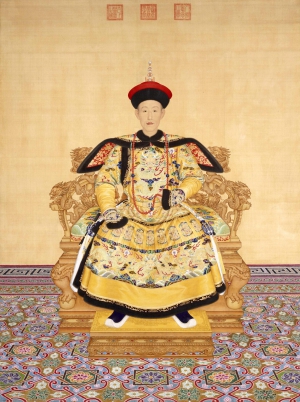
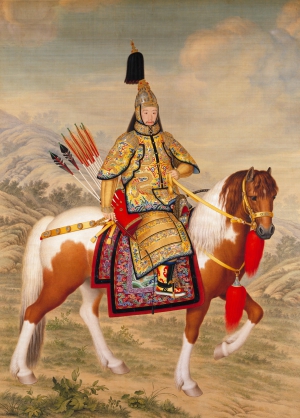
About David Rosier
 David Rosier is a Chartered Insurer, and Fellow of the Assurance Medical Society, by profession with a specialization in medical risk assessment.
He has spent in excess of 25 years focusing on business in Asia, and China in particular, and for 14 years he and his family lived in Hong Kong.
During the years in Hong Kong David, and his wife Wendy, created a ‘World Class’ collection of in excess of 500 Imperial Qing Dynasty, and related items, of costume and dress accessories. This collection was acquired, in its entirety, in late 2019 by The Shanghai Museum, Peoples Republic of China.
David is a past committee member of the Hong Kong Textile Society.
Since returning to the UK David has lectured extensively on Chinese Court Costume of the Qing Dynasty (1644-1911) plus the history, culture, and arts of Imperial China.
Groups visited have been as diverse as The National Trust, Textile Guilds, Confucius Institutes, Art Fund and Oriental focused societies, plus university departments and museums.
David is an Accredited Lecturer for The Arts Society and lectures regularly around the UK and Europe plus tours of societies in Australia, New Zealand, and SE Asia. Additionally, he has organised and led tours to China that focus on Imperial History, Art, and Culture.
David is also a regular contributor for publications such as China Eye, Oriental Art, and several textile related publications.
David Rosier is a Chartered Insurer, and Fellow of the Assurance Medical Society, by profession with a specialization in medical risk assessment.
He has spent in excess of 25 years focusing on business in Asia, and China in particular, and for 14 years he and his family lived in Hong Kong.
During the years in Hong Kong David, and his wife Wendy, created a ‘World Class’ collection of in excess of 500 Imperial Qing Dynasty, and related items, of costume and dress accessories. This collection was acquired, in its entirety, in late 2019 by The Shanghai Museum, Peoples Republic of China.
David is a past committee member of the Hong Kong Textile Society.
Since returning to the UK David has lectured extensively on Chinese Court Costume of the Qing Dynasty (1644-1911) plus the history, culture, and arts of Imperial China.
Groups visited have been as diverse as The National Trust, Textile Guilds, Confucius Institutes, Art Fund and Oriental focused societies, plus university departments and museums.
David is an Accredited Lecturer for The Arts Society and lectures regularly around the UK and Europe plus tours of societies in Australia, New Zealand, and SE Asia. Additionally, he has organised and led tours to China that focus on Imperial History, Art, and Culture.
David is also a regular contributor for publications such as China Eye, Oriental Art, and several textile related publications.
Sponsor: Currencies Direct
How to watch
• in person in the Cultural Centre• on the internet using Zoom

top
November 12th 2024 (18:00 CET )
Gleaming Spires of London- An Armchair Tour of London's Finest Buildings
Ian Swankie
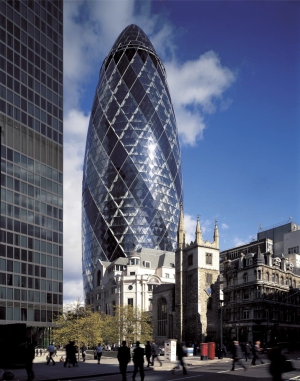

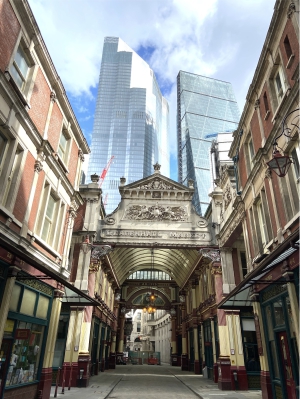
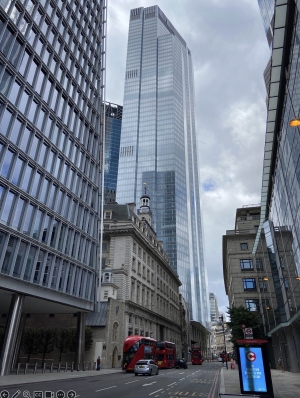
About Ian Swankie
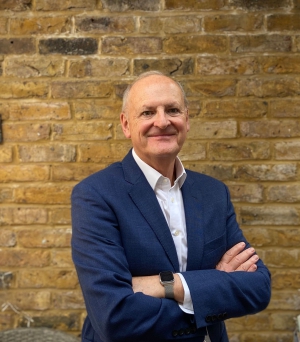 Ian Swankie is a Londoner with a passion for art and architecture. He is an official guide at Tate Modern, Tate Britain, Guildhall Art Gallery and St Paul’s Cathedral, and gives tours at each venue. He is also a qualified and active freelance London guide and leads regular tours for various corporations and organisations. Since 2012 he has led a popular weekly independent art lecture group in his hometown of Richmond in West London, and he gives talks on a variety of subjects. He is an accredited lecturer for The Arts Society, and a Freeman of the Worshipful Company of Art Scholars, one of the City Livery Companies.
Ian talked to us in May 2022 about Grayson Perry.
Ian Swankie is a Londoner with a passion for art and architecture. He is an official guide at Tate Modern, Tate Britain, Guildhall Art Gallery and St Paul’s Cathedral, and gives tours at each venue. He is also a qualified and active freelance London guide and leads regular tours for various corporations and organisations. Since 2012 he has led a popular weekly independent art lecture group in his hometown of Richmond in West London, and he gives talks on a variety of subjects. He is an accredited lecturer for The Arts Society, and a Freeman of the Worshipful Company of Art Scholars, one of the City Livery Companies.
Ian talked to us in May 2022 about Grayson Perry.Sponsor: Blevins Franks
How to watch
• in person in the Cultural Centre, Nerja• on the internet using Zoom

top
November 19th 2024 (12:00 CET ) morning lecture
My Half Orange
John Julius Reel
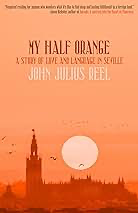
In his late thirties, John Julius Reel left his native New York for Seville, hoping to reinvent himself, find his voice as a writer, and cast off the shadow of his famous father. When his girlfriend dumped him after a month-long visit, the last tie was cut, and he had to face his future from his stark, mosquito-infested rented room. Alone in a foreign land, struggling with the language, and longing to find his place and purpose in the world, he began to rebuild his life.
What follows is a tender, comical, and illuminating story about what it means to learn to speak and think in a new way, and to spend so much time away from home that the foreign becomes familiar. This heartwarming chronicle filled with Sevillian delicias (soccer, Iberian ham, creative cursing, and one extraordinary woman) reveals how love, language, and culture can transform your life forever.
The book |i|My Half Orange: A Story of Love and Language in Seville|/i| was recently published by Tortoise Books in the U.S. and the U.K.
About John Julius Reel
I moved from Staten Island, New York to Seville in 2005. From 2009 to 2013, I published a weekly column in Diario de Sevilla, in Spanish, called La Sevilla del Guiri. In 2014, a collection of those columns was anthologized in ¿Qué pinto yo aquí?, published by Editorial Confluencias in Almería. Currently, I collaborate on three Canal Sur Radio programs: Las Mañanas de Andalucía con Jesús Vigorra, Gente de Andalucía con Pepe da Rosa, and Anda Levantawith the malageño José Antonio Domínguez. In 2022, I landed a supporting role in Nonio Parejo’s feature film 6 toreros yankees 6, which had its grand opening at the Seville European Film Festival. I have given talks at the University of Almería, at Casa Gerald Brenan in Churriana, and at The American Women’s Club of Seville. My Facebook page Spanglish in a Minute has over 200,000 followers and my Instagram account @johnjuliusreel has over 350,000. I also passionately review memoirs on my YouTube channel Book Rants.How to watch
• in person in the Museum, Nerja (NB not available on the internet)
top
November 26th 2024 (18:00 CET )
The Phoenicians on the Costa del Sol The Dawn of a New World
Manuel Parodí
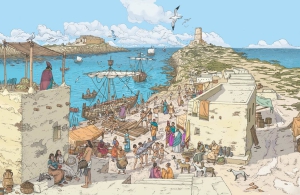
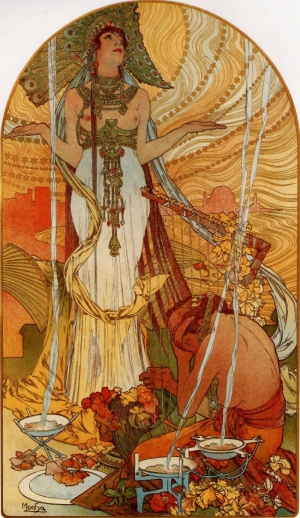
About Manuel Parodí
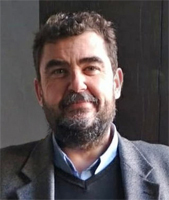 Manuel Parodi, historian and archaeologist, has been working on the History of Archaeology in Northern Morocco and Southern Spain since 2005, and has published several books and articles regarding this particular matter. He has also been working in several Archaeological and Historical Research Projects in Morocco since 2005, including the Archaeological Museum of Tetouan, its Archives and historical documents and records.
Manuel has talked to us several times: in November 2016 about The Spanish Indiana Jones in North Africa 1900-1948, in October 2019 about Gadir/Cádiz and in November 2020 about the Magellan-Elcano circumnavigation of the world. His most recent talk was in March 2022 when he discussed Vikings in Al Andalus.
Manuel Parodi, historian and archaeologist, has been working on the History of Archaeology in Northern Morocco and Southern Spain since 2005, and has published several books and articles regarding this particular matter. He has also been working in several Archaeological and Historical Research Projects in Morocco since 2005, including the Archaeological Museum of Tetouan, its Archives and historical documents and records.
Manuel has talked to us several times: in November 2016 about The Spanish Indiana Jones in North Africa 1900-1948, in October 2019 about Gadir/Cádiz and in November 2020 about the Magellan-Elcano circumnavigation of the world. His most recent talk was in March 2022 when he discussed Vikings in Al Andalus.Sponsor: Dr Rik Heymans
How to watch
• in person in the Cultural Centre, Nerja• on the internet using Zoom
• on our YouTube channel for a limited period starting the day after the lecture.

top
December 10th 2024 (18:00 CET )
Snow and ice: Holland frozen in time
Jane Choy
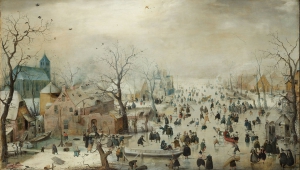
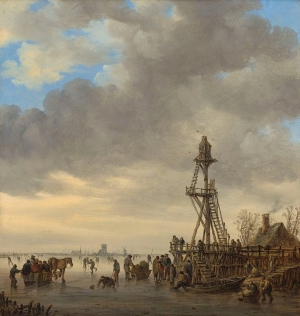
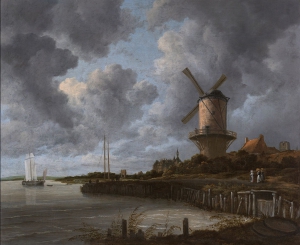
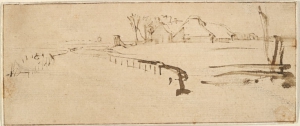
About Jane Choy
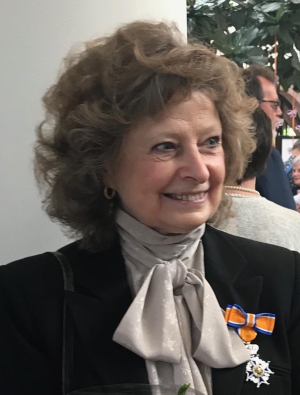 Jane E. Choy-Thurlow is a docent and enjoys giving lectures and tours at the Mauritshuis, Prince William V gallery and Huygens Museum Hofwijck in The Hague, The Netherlands. A few of the many exhibits in the Mauritshuis she has been part of are: the legendary Johannes Vermeer exhibit, Rembrandt by Himself and Holbein, Portraitist of the Renaissance. An active member of The Arts Society, she is a founding member of DFAS of The Hague and has fulfilled committee positions including chairman and Mainland Europe Area Chairman, Area Trainer and New Societies/Support committee member. She received her BSc from Salem State University, USA, her MEd from Trinity College Dublin and continued art history studies at Leiden University. In 2018 she was given the honour of Knight in the Order of Oranje Nassau by the Dutch King Willem Alexander of Orange for her knowledge and work in the field of the Arts especially 15th to 17th century Dutch and Flemish art.
Jane E. Choy-Thurlow is a docent and enjoys giving lectures and tours at the Mauritshuis, Prince William V gallery and Huygens Museum Hofwijck in The Hague, The Netherlands. A few of the many exhibits in the Mauritshuis she has been part of are: the legendary Johannes Vermeer exhibit, Rembrandt by Himself and Holbein, Portraitist of the Renaissance. An active member of The Arts Society, she is a founding member of DFAS of The Hague and has fulfilled committee positions including chairman and Mainland Europe Area Chairman, Area Trainer and New Societies/Support committee member. She received her BSc from Salem State University, USA, her MEd from Trinity College Dublin and continued art history studies at Leiden University. In 2018 she was given the honour of Knight in the Order of Oranje Nassau by the Dutch King Willem Alexander of Orange for her knowledge and work in the field of the Arts especially 15th to 17th century Dutch and Flemish art.Sponsor: Casa Select
How to watch
• in person in the Cultural Centre• on the internet using Zoom

top
January 14th 2025 (18:00 CET )
Arte Nova and Art Deco in Porto and Aveiro, Portugal
Anne Anderson PhD BA FSA
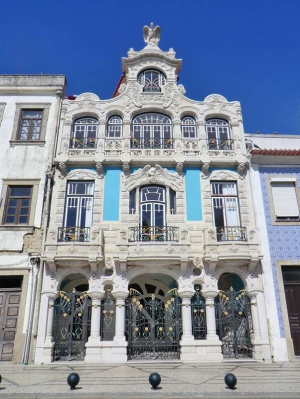
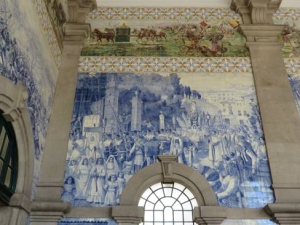
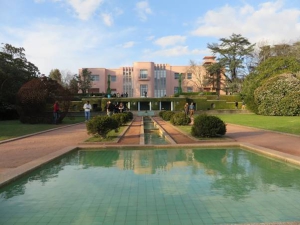
About Anne Anderson
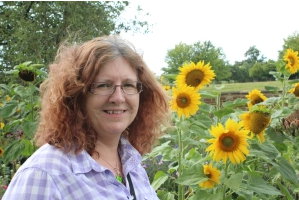 From 1993-2007 Anne was a senior lecturer on the Fine Arts Valuation degree courses at Southampton Solent University, where she specialized in the Aesthetic Movement, Arts and Crafts, Art Nouveau and Modernism. She has published books on the Pre-Raphaelites, Edward Burne-Jones, and Art Nouveau Architecture. Her academic papers have appeared in many well-respected journals including Design History; The British Art Journal; and Victorian Literature and Culture. Anne has also curated four national exhibitions, mostly recently Beyond the Brotherhood The Pre-Raphaelite Legacy (2019-20). American fellowships held include the Huntington Library, CA and the American Antiquarian Society, MA. Anne’s career as an international speaker has taken her all over the world from Australia to Canada. She has also lectured on several cruise ships, Swan Hellenic’s Minerva, the Spirit of Adventure and the Hebridean.
Anne talked to us about Ikea in January 2019.
From 1993-2007 Anne was a senior lecturer on the Fine Arts Valuation degree courses at Southampton Solent University, where she specialized in the Aesthetic Movement, Arts and Crafts, Art Nouveau and Modernism. She has published books on the Pre-Raphaelites, Edward Burne-Jones, and Art Nouveau Architecture. Her academic papers have appeared in many well-respected journals including Design History; The British Art Journal; and Victorian Literature and Culture. Anne has also curated four national exhibitions, mostly recently Beyond the Brotherhood The Pre-Raphaelite Legacy (2019-20). American fellowships held include the Huntington Library, CA and the American Antiquarian Society, MA. Anne’s career as an international speaker has taken her all over the world from Australia to Canada. She has also lectured on several cruise ships, Swan Hellenic’s Minerva, the Spirit of Adventure and the Hebridean.
Anne talked to us about Ikea in January 2019.How to watch
• in person in the Cultural Centre• on the internet using Zoom
• on our YouTube channel for a limited period starting the day after the lecture.

top
January 28th 2025 (18:00 CET )
Hunting the Borderlands in Ronda
Rafa Anderson BA(hons) Arch, Dip Arch, RIBA

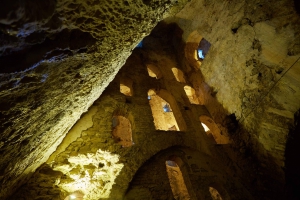
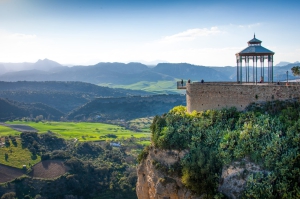
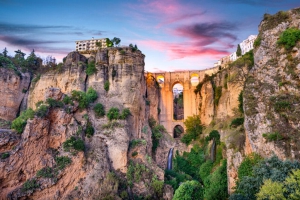
About Rafa Anderson
Rafael spent his earlier architectural career working in London, Scandinavia, India and Hong Kong. 12 years ago he came to Southern Spain where he has practiced primarily in La Alpujarra and Granada, recently completing the restoration of a listed early 16th Century Islamic house in the Albayzin. He has a particular interest in Spanish history and architecture and has lectured widely on related subjects.
Rafa is no stranger to Nerja, having to talked to us on a range of subjects over the yearsSponsor: De Cotta Law
How to watch
• in person in the Cultural Centre, Nerja• on the internet using Zoom
• on our YouTube channel for a limited period starting the day after the lecture.

top
February 11th 2025 (18:00 CET )
Unravelling the Silk Road
Christopher Aslan Alexander
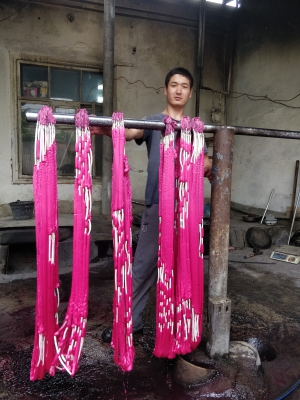
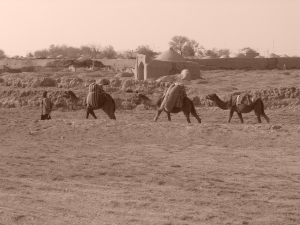
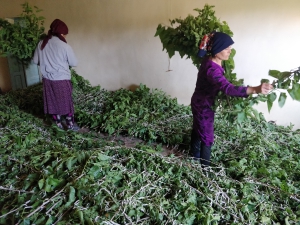
About Christopher Aslan Alexander
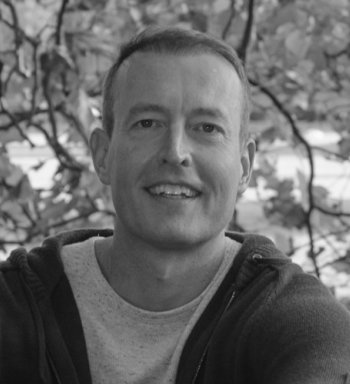 Chris Aslan was born in Turkey (hence the name Aslan) and spent his childhood there and in war-torn Beirut. After school, Chris spent two years at sea before studying Media and journalism at Leicester University. He then moved to Khiva, a desert oasis in Uzbekistan, establishing a UNESCO workshop reviving fifteenth century carpet designs and embroideries, and becoming the largest non-government employer in town. He was kicked out as part of an anti-Western purge, and took a year in Cambridge to write A Carpet Ride to Khiva. Chris then spent several years in the Pamirs mountains of Tajikistan, training yak herders to comb their yaks for their cashmere-like down. Next came a couple more years in Kyrgyzstan living in the world’s largest natural walnut forest and establishing a wood-carving workshop. Since then, Chris has studied and rowed at Oxford, and is now based in Cambridge, but with plans to move to North Cyprus. When he’s not lecturing for The Arts Society, he writes. His latest book, Unravelling the Silk Road, is published by Icon Books. Chris also takes tours to Central Asia, returning whenever he can, having left a large chunk of his heart out there.
Chris Aslan was born in Turkey (hence the name Aslan) and spent his childhood there and in war-torn Beirut. After school, Chris spent two years at sea before studying Media and journalism at Leicester University. He then moved to Khiva, a desert oasis in Uzbekistan, establishing a UNESCO workshop reviving fifteenth century carpet designs and embroideries, and becoming the largest non-government employer in town. He was kicked out as part of an anti-Western purge, and took a year in Cambridge to write A Carpet Ride to Khiva. Chris then spent several years in the Pamirs mountains of Tajikistan, training yak herders to comb their yaks for their cashmere-like down. Next came a couple more years in Kyrgyzstan living in the world’s largest natural walnut forest and establishing a wood-carving workshop. Since then, Chris has studied and rowed at Oxford, and is now based in Cambridge, but with plans to move to North Cyprus. When he’s not lecturing for The Arts Society, he writes. His latest book, Unravelling the Silk Road, is published by Icon Books. Chris also takes tours to Central Asia, returning whenever he can, having left a large chunk of his heart out there.How to watch
• in person in the Cultural Centre• on the internet using Zoom

top
March 11th 2025 (18:00 CET )
The Borgias, the most infamous family in history?
Sarah Dunant
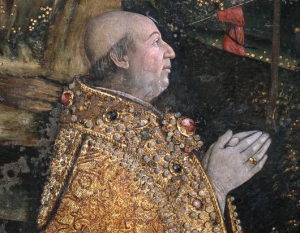
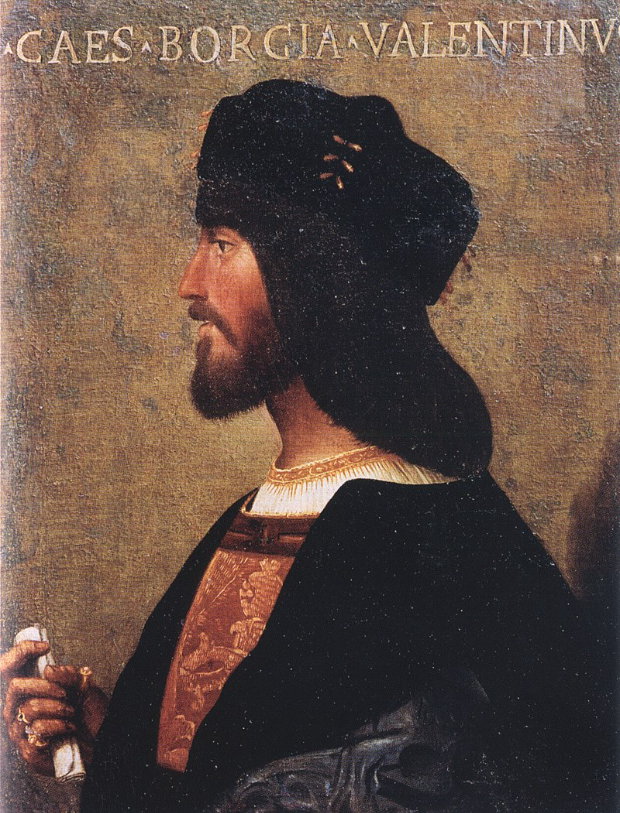
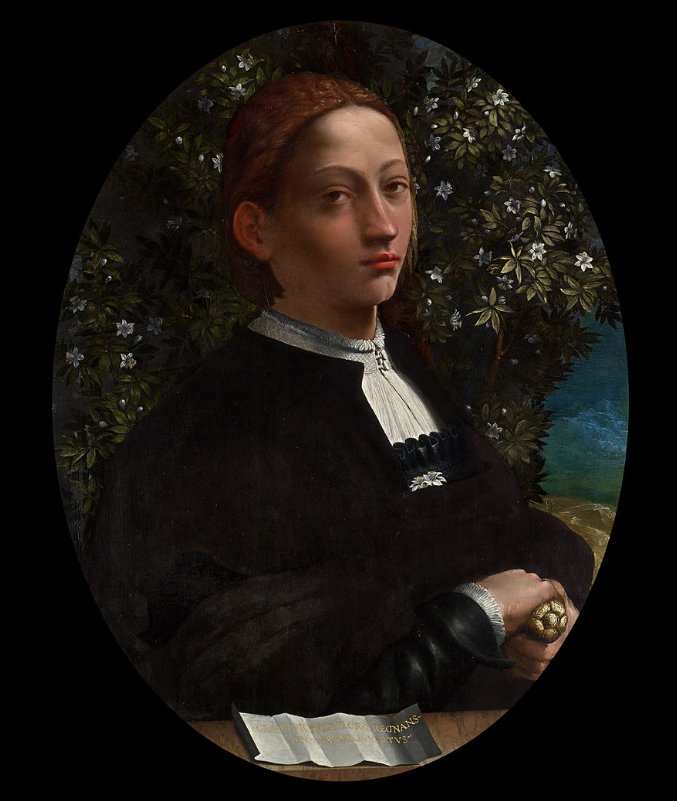
About Sarah Dunant
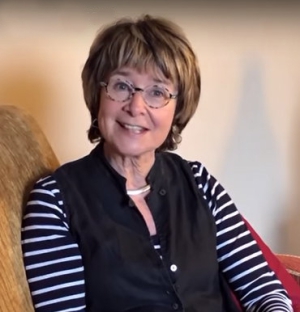 Novelist, broadcaster and critic. Sarah read history at Cambridge, then worked for many years as a cultural journalist in radio and television on such programmes as Kaleidoscope (BBC Radio 4), The Late Show (BBC 2), and Night Waves/Free thinking (BBC Radio 3). She has published thirteen novels, taught renaissance studies at Washington University, St Louis and lectured around the world at festivals and conferences. Her last five novels have been set within the Italian Renaissance. In the Name of the Family completes the story of the Borgia family and the remarkable period of Italian history in which they lived. She is a regular contributor to BBC Radio 4’s A POINT OF VIEW and these talks, alongside her series on history for Radio 4, When Greeks Flew Kites are available on podcast or BBC sounds.
Novelist, broadcaster and critic. Sarah read history at Cambridge, then worked for many years as a cultural journalist in radio and television on such programmes as Kaleidoscope (BBC Radio 4), The Late Show (BBC 2), and Night Waves/Free thinking (BBC Radio 3). She has published thirteen novels, taught renaissance studies at Washington University, St Louis and lectured around the world at festivals and conferences. Her last five novels have been set within the Italian Renaissance. In the Name of the Family completes the story of the Borgia family and the remarkable period of Italian history in which they lived. She is a regular contributor to BBC Radio 4’s A POINT OF VIEW and these talks, alongside her series on history for Radio 4, When Greeks Flew Kites are available on podcast or BBC sounds.Sponsor: Blevins Franks
How to watch
• in person in the Cultural Centre• on the internet using Zoom

top
March 25th 2025 (18:00 CET )
Famous Freemason Artists
Helen Sijsling
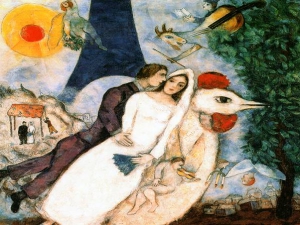

About Helen Sijsling
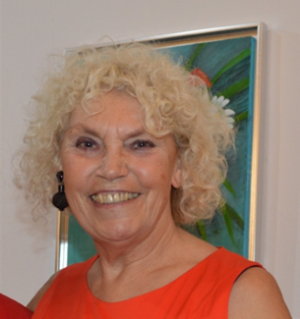 Helen Sijsling MA (born in Australia, lived in the Netherlands, lives in Spain), MA History of Art (University of Leyden), MA English Literature (Universities of Leyden and Oxford) and MA Educational Management (University of Amsterdam). Helen taught English for the first part of her career to later become management consultant on education, advising secondary schools on educational improvement and training teachers and managers in The Netherlands and the Antilles. Helen is presently Chairman of The Arts Society Nerja and has lectured for many years to The Arts Societies in Europe.
Helen Sijsling MA (born in Australia, lived in the Netherlands, lives in Spain), MA History of Art (University of Leyden), MA English Literature (Universities of Leyden and Oxford) and MA Educational Management (University of Amsterdam). Helen taught English for the first part of her career to later become management consultant on education, advising secondary schools on educational improvement and training teachers and managers in The Netherlands and the Antilles. Helen is presently Chairman of The Arts Society Nerja and has lectured for many years to The Arts Societies in Europe.Sponsor: Off topic publishing
How to watch
• in person in the Cultural Centre, Nerja• on the internet using Zoom
• on our YouTube channel for a limited period starting the day after the lecture.

top
April 15th 2025 (18:00 CEST )
Women Artists in Art History
Alejandra Carazo
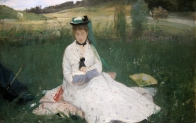
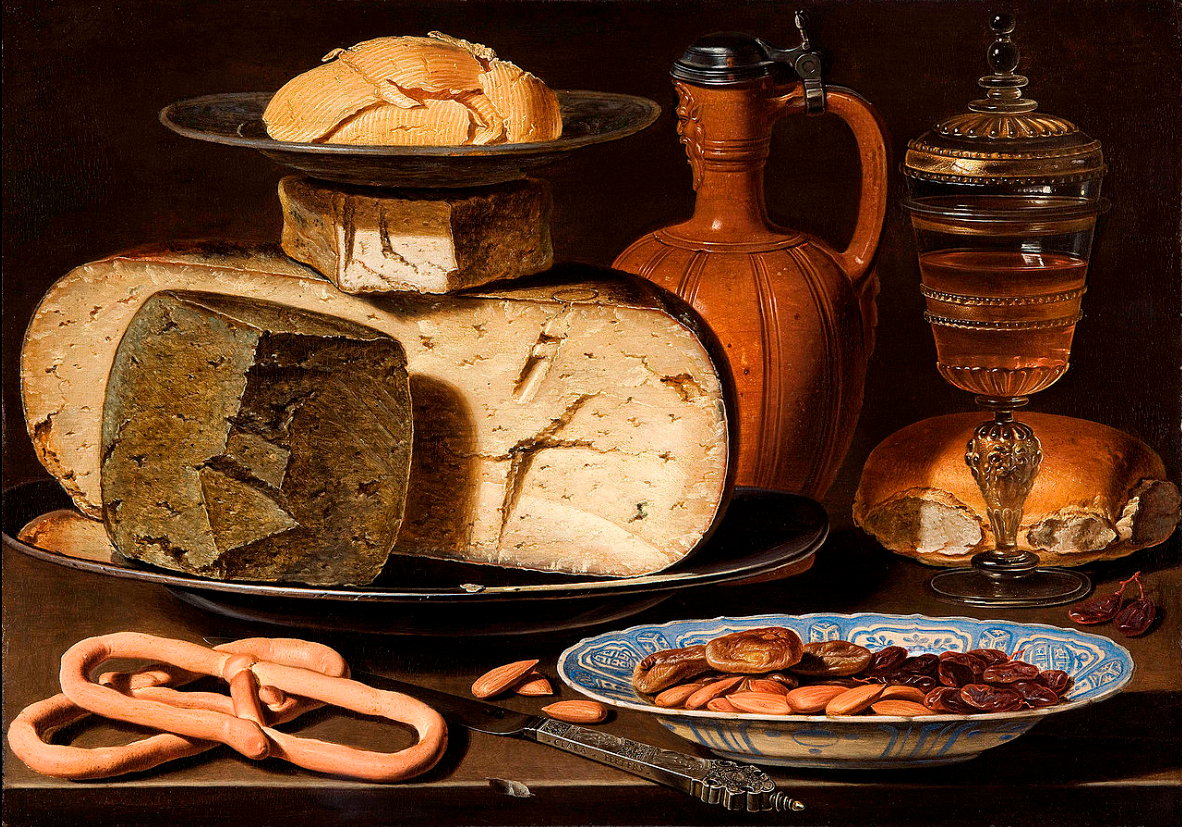

About Alejandra Carazo
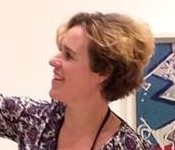 "From my experience and studies in Modern Art, l learned to understand ART as a reflection of Humanity in each moment of History.
Artists and their creations open doors to vital aspects, from anthropology to science, through emotions, gifting us with an understanding of the world from spheres we do not usually encounter in our daily lives.
Trained by Amelia Arenas, former Head of Education of the MOMA, and thanks to the focus of Bernard and Christine Picasso in the values of Art and Education, I lived a lifetime experience at the Picasso Museum which allowed me to deliver the art world to more than 80k visitors in my 8 years at the institution, becoming an expert in teaching general audiences how to appreciate the artwork from their own personal view and background, meeting oneself in the act of viewing.
I nowadays continue to share my art knowledge in private collections and as freelance curator and lecturer.
At the same time life has led me to encounter with the no less exciting world of design, curating contemporary design homes where creativity and art play an important role."
Alejandra last talked to in November 2023 when her subject was Andy Warhol.
"From my experience and studies in Modern Art, l learned to understand ART as a reflection of Humanity in each moment of History.
Artists and their creations open doors to vital aspects, from anthropology to science, through emotions, gifting us with an understanding of the world from spheres we do not usually encounter in our daily lives.
Trained by Amelia Arenas, former Head of Education of the MOMA, and thanks to the focus of Bernard and Christine Picasso in the values of Art and Education, I lived a lifetime experience at the Picasso Museum which allowed me to deliver the art world to more than 80k visitors in my 8 years at the institution, becoming an expert in teaching general audiences how to appreciate the artwork from their own personal view and background, meeting oneself in the act of viewing.
I nowadays continue to share my art knowledge in private collections and as freelance curator and lecturer.
At the same time life has led me to encounter with the no less exciting world of design, curating contemporary design homes where creativity and art play an important role."
Alejandra last talked to in November 2023 when her subject was Andy Warhol.
Sponsor: Casa Select
How to watch
• in person in the Cultural Centre, Nerja• on the internet using Zoom
• on our YouTube channel for a limited period starting the day after the lecture.

top
May 13th 2025 (18:00 CEST )
‘All the Lonely People’: The work of American Realist Edward Hopper
Stella Lyons MA BA

Hopper was a painter of loneliness and melancholy; from solitary figures in offices, motel rooms and diners, to deserted towns. He portrayed a changing America and the isolation of the individual in the modern city.
His works are visually stunning; characterised by striking colours, cinematic and cropped compositions which heighten tension. Flooded with light, 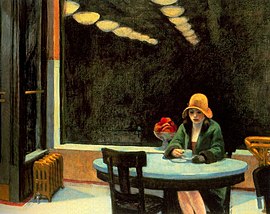
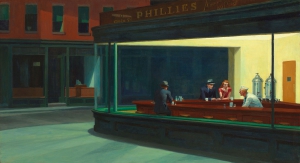
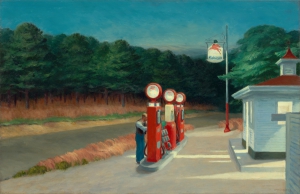 his paintings expose detached figures and create a mood of eerie uneasiness. This talk considers some of his most arresting works, including ‘Nighthawks’, ‘Gas’ and ‘Automat’.
his paintings expose detached figures and create a mood of eerie uneasiness. This talk considers some of his most arresting works, including ‘Nighthawks’, ‘Gas’ and ‘Automat’.
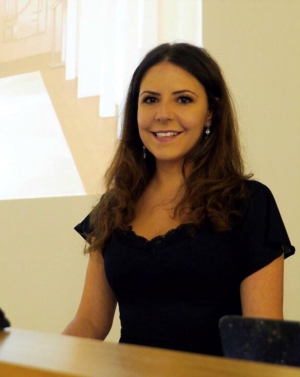 Stella Grace Lyons is a freelance Art History lecturer, speaker and writer accredited with The Arts Society. She has lectured across the UK, Ireland, Spain, Norway, Germany, Belgium, the Netherlands, Malaysia and will soon embark on a lecturing tour in Australasia.
Stella gained her BA in the History of Art with a 1st class in her dissertation from the University of Bristol (2007-2011), and her MA in History of Art from the University of Warwick. She spent a year studying Renaissance art in Italy at the British Institute of Florence, and three months studying Venetian art in Venice. In addition, she attended drawing classes at the prestigious Charles H. Cecil studios in Florence, a private atelier that follows a curriculum based on the leading ateliers of nineteenth century Paris.
Stella runs her own Art History lectures both in person and online. She is a regular lecturer in the UK and Europe for The Arts Society, Tour companies, and the National Trust, amongst others. Stella is also a part-time lecturer for the University of South Wales.
She has written about art for several publications and her article on Norwegian art was recently featured on the front cover of The Arts Society magazine.
In addition to her lecturing work, Stella works as an artist's model for the internationally renowned figurative artist, Harry Holland.
Stella talked to us about Sorolla in October 2021.
Stella Grace Lyons is a freelance Art History lecturer, speaker and writer accredited with The Arts Society. She has lectured across the UK, Ireland, Spain, Norway, Germany, Belgium, the Netherlands, Malaysia and will soon embark on a lecturing tour in Australasia.
Stella gained her BA in the History of Art with a 1st class in her dissertation from the University of Bristol (2007-2011), and her MA in History of Art from the University of Warwick. She spent a year studying Renaissance art in Italy at the British Institute of Florence, and three months studying Venetian art in Venice. In addition, she attended drawing classes at the prestigious Charles H. Cecil studios in Florence, a private atelier that follows a curriculum based on the leading ateliers of nineteenth century Paris.
Stella runs her own Art History lectures both in person and online. She is a regular lecturer in the UK and Europe for The Arts Society, Tour companies, and the National Trust, amongst others. Stella is also a part-time lecturer for the University of South Wales.
She has written about art for several publications and her article on Norwegian art was recently featured on the front cover of The Arts Society magazine.
In addition to her lecturing work, Stella works as an artist's model for the internationally renowned figurative artist, Harry Holland.
Stella talked to us about Sorolla in October 2021.



About Stella Lyons
 Stella Grace Lyons is a freelance Art History lecturer, speaker and writer accredited with The Arts Society. She has lectured across the UK, Ireland, Spain, Norway, Germany, Belgium, the Netherlands, Malaysia and will soon embark on a lecturing tour in Australasia.
Stella gained her BA in the History of Art with a 1st class in her dissertation from the University of Bristol (2007-2011), and her MA in History of Art from the University of Warwick. She spent a year studying Renaissance art in Italy at the British Institute of Florence, and three months studying Venetian art in Venice. In addition, she attended drawing classes at the prestigious Charles H. Cecil studios in Florence, a private atelier that follows a curriculum based on the leading ateliers of nineteenth century Paris.
Stella runs her own Art History lectures both in person and online. She is a regular lecturer in the UK and Europe for The Arts Society, Tour companies, and the National Trust, amongst others. Stella is also a part-time lecturer for the University of South Wales.
She has written about art for several publications and her article on Norwegian art was recently featured on the front cover of The Arts Society magazine.
In addition to her lecturing work, Stella works as an artist's model for the internationally renowned figurative artist, Harry Holland.
Stella talked to us about Sorolla in October 2021.
Stella Grace Lyons is a freelance Art History lecturer, speaker and writer accredited with The Arts Society. She has lectured across the UK, Ireland, Spain, Norway, Germany, Belgium, the Netherlands, Malaysia and will soon embark on a lecturing tour in Australasia.
Stella gained her BA in the History of Art with a 1st class in her dissertation from the University of Bristol (2007-2011), and her MA in History of Art from the University of Warwick. She spent a year studying Renaissance art in Italy at the British Institute of Florence, and three months studying Venetian art in Venice. In addition, she attended drawing classes at the prestigious Charles H. Cecil studios in Florence, a private atelier that follows a curriculum based on the leading ateliers of nineteenth century Paris.
Stella runs her own Art History lectures both in person and online. She is a regular lecturer in the UK and Europe for The Arts Society, Tour companies, and the National Trust, amongst others. Stella is also a part-time lecturer for the University of South Wales.
She has written about art for several publications and her article on Norwegian art was recently featured on the front cover of The Arts Society magazine.
In addition to her lecturing work, Stella works as an artist's model for the internationally renowned figurative artist, Harry Holland.
Stella talked to us about Sorolla in October 2021.
Sponsor: Dentadanés
How to watch
• in person in the Cultural Centre• on the internet using Zoom
• on our YouTube channel for a limited period starting the day after the lecture.










